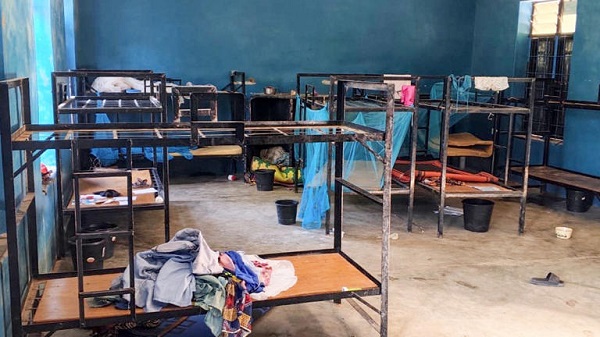Alberta
Local school divisions say Provincial Budget leaves them 5.5 Million short

A joint press release from Red Deer Catholic Regional Schools and Red Deer Public Schools
Local School Boards Face Provincial Budget Challenges
Boards, Administration and Teachers Share Their Concerns
The provincial education budget was announced by Alberta Education on October 24. On Friday, October 25, the details of that budget were shared with school divisions.
While the overall provincial funding for education has remained the same, the reality is there has been a dramatic reduction in funding, which will be felt in both our school divisions. A key impact came with the reallocation of funding for class size and classroom improvement to support student enrollment growth across the province. As a result, both Red Deer Catholic Regional Schools and Red Deer Public Schools will face higher deficits than originally planned.
Both school divisions anticipated funding shortfalls for this school year. However, now that we have seen the details and actual numbers in the provincial budget, more adjustments will have to be made. Red Deer Public Schools is facing an additional $3.5 million loss in funding on its original budget of $125 million and will need to fill that gap. Red Deer Catholic Regional Schools will see a $2 million reduction in funding from its original budget of $115 million.
This means both jurisdictions will have to use accumulated reserves to cover the deficits beyond what was originally anticipated. While our shared priority is to have the least impact on the classroom, this funding shortfall will ultimately have an affect on all classrooms, programs and students. Beyond that, our schools continue to grow and now more than ever, we are experiencing more complexity in our classrooms with students and teachers needing more support.
Both Divisions now have important and challenging decisions to make as a result of the provincial budget. It will be even more difficult to make these changes mid-year.
“In preparation for projected funding changes, we reduced our allocations to schools and some programs by two per cent for the start of the 2019-2020 school year. This decision has offset the bulk of the more than $2 million loss in funding we experienced with Thursday’s provincial budget. We will use our reserves to eliminate the remaining deficit, but we also are concerned about funding allocations going forward,” said Superintendent Dr. V. Paul Mason at Red Deer Catholic Regional Schools.
“After hearing more details of the 2019 Provincial Budget, Red Deer Public will be forced to reevaluate some of our priorities. These are priorities that were set before the 2019/20 school year and reevaluating them mid-year will have a significant impact to staff and ultimately students. This could also mean examining school fees for next school year to offset costs due to the shortfall in provincial funding,” said Stu Henry, Superintendent for Red Deer Public Schools.
Teachers in both Divisions are also concerned.
“Teachers know that a fully funded education system is a good investment for government that pays off exponentially for our society in the future. Unfortunately, these budget cuts likely means that more students, especially those who require additional learning supports, may not have access to tools and resources that they need to fully realize their potential, despite having the very best teachers in their classrooms,” said Stephen Merredew, Alberta Teachers’ Association Local 80 President representing teachers in Red Deer Catholic Regional Schools.
“Teachers are disappointed with this budget. Once again, teachers will be asked to do more with less, but they shouldn’t have to. Our children are our most precious resource in this province and they deserve better than what this government has brought forward for education funding,” said Kelly Aleman, Alberta Teachers’ Association Local 60 President representing teachers in Red Deer Public Schools.
As both divisions continue to grow, the question of funding and future budgets remains a concern.
Alberta
New pipeline from Alberta would benefit all Canadians—despite claims from B.C. premier

From the Fraser Institute
The pending Memorandum of Understanding between the Carney government and the Alberta governments will reportedly support a new oil pipeline from Alberta’s oilsands to British Columbia’s tidewater. But B.C. Premier David Eby continues his increasingly strident—and factually challenged—opposition to the whole idea.
Eby’s arguments against a new pipeline are simply illogical and technically incorrect.
First, he argues that any pipeline would pose unmitigated risks to B.C.’s coastal environment, but this is wrong for several reasons. The history of oil transport off of Canada’s coasts is one of incredible safety, whether of Canadian or foreign origin, long predating federal Bill C-48’s tanker ban. New pipelines and additional transport of oil from (and along) B.C. coastal waters is likely very low environmental risk. In the meantime, a regular stream of oil tankers and large fuel-capacity ships have been cruising up and down the B.C. coast between Alaska and U.S. west coast ports for decades with great safety records.
Next, Eby argues that B.C.’s First Nations people oppose any such pipeline and will torpedo energy projects in B.C. But in reality, based on the history of the recently completed Trans Mountain Expansion (TMX) pipeline, First Nations opposition is quite contingent. The TMX project had signed 43 mutual benefit/participation agreements with Indigenous groups along its route by 2018, 33 of which were in B.C. As of March 2023, the project had signed agreements with 81 out of 129 Indigenous community groups along the route worth $657 million, and the project had resulted in more than $4.8 billion in contracts with Indigenous businesses.
Back in 2019, another proposed energy project garnered serious interest among First Nations groups. The First Nations-proposed Eagle Spirit Energy Corridor, aimed to connect Alberta’s oilpatch to a port in Kitimat, B.C. (and ultimately overseas markets) had the buy-in of 35 First Nations groups along the proposed corridor, with equity-sharing agreements floated with 400 others. Energy Spirit, unfortunately, died in regulatory strangulation in the Trudeau government’s revised environmental assessment process, and with the passage of the B.C. tanker ban.
Premier Eby is perfectly free to opine and oppose the very thought of oil pipelines crossing B.C. But the Supreme Court of Canada has already ruled in a case about the TMX pipeline that B.C. does not have the authority to block infrastructure of national importance such as pipelines.
And it’s unreasonable and corrosive to public policy in Canada for leading government figures to adopt positions on important elements of public policy that are simply false, in blatant contradiction to recorded history and fact. Fact—if the energy industry is allowed to move oil reserves to markets other than the United States, this would be in the economic interest of all Canadians including those in B.C.
It must be repeated. Premier Eby’s objections to another Alberta pipeline are rooted in fallacy, not fact, and should be discounted by the federal government as it plans an agreement that would enable a project of national importance.
Alberta
Premier Danielle Smith says attacks on Alberta’s pro-family laws ‘show we’ve succeeded in a lot of ways’

From LifeSiteNews
Recent legislation to dial back ‘woke progressivism’ is intended to protect the rights of parents and children despite opposition from the left.
Alberta Premier Danielle Smith took a shot at “woke progressivism” and detractors of her recent pro-family laws, noting that because wokeness went “too far,” the “dial” has turned in favor of parental rights and “no one” wants their “kid to transition behind their back.”
“We know that things went a little bit too far with woke progressivism on so many fronts and we’re trying to get back to the center, trying to get them back to the middle,” Smith said in a recent video message posted on the ruling United Conservative Party’s (UCP) official X account.
Smith, who has been battling the leftist opposition New Democratic Party (NDP) attacks on her recent pro-family legislation, noted how “we’ve succeeded in a lot of ways.”
“I think we have moved the dial on protecting children and the right of girls and women to participate in sports without having to face born male athletes,” mentioning that the Olympics just announced gender-confused athletes are not allowed to compete in male or female categories.
“I think we’re moving the dial on parental rights to make sure that they know what’s going on with their kids. No one wants their kid to be transitioned behind their back and not know. I mean, it doesn’t matter what your background is, you want to know what’s going on with your child.”
Smith also highlighted how conservatives have “changed the entire energy conversation in the country, we now have we now have more than 70 percent of Canadians saying they believe we should build pipelines, and that we should be an energy superpower.’
As reported by LifeSiteNews, Smith recently said her government will use a rare constitutional tool, the notwithstanding clause, to ensure three bills passed this year – a ban on transgender surgery for minors, stopping men from competing in women’s sports, and protecting kids from extreme aspects of the LGBT agenda – remain law after legal attacks from extremist activists.
Bill 26 was passed in December 2024, amending the Health Act to “prohibit regulated health professionals from performing sex reassignment surgeries on minors.”
Last year, Smith’s government also passed Bill 27, a law banning schools from hiding a child’s pronoun changes at school that will help protect kids from the extreme aspects of the LGBT agenda.
Bill 27 will also empower the education minister to, in effect, stop the spread of extreme forms of pro-LGBT ideology or anything else allowed to be taught in schools via third parties.
Bill 29, which became law last December, bans gender-confused men from competing in women’s sports, the first legislation of its kind in Canada. The law applies to all school boards, universities, and provincial sports organizations.
Alberta’s notwithstanding clause is like all other provinces’ clauses and was a condition Alberta agreed to before it signed onto the nation’s 1982 constitution.
-

 Alberta2 days ago
Alberta2 days agoPremier Smith explains how private clinics will be introduced in Alberta
-

 Censorship Industrial Complex2 days ago
Censorship Industrial Complex2 days agoUK Government “Resist” Program Monitors Citizens’ Online Posts
-

 Business2 days ago
Business2 days agoUS Supreme Court may end ‘emergency’ tariffs, but that won’t stop the President
-

 Bruce Dowbiggin2 days ago
Bruce Dowbiggin2 days agoElbows Down For The Not-So-Magnificent Seven: Canada’s Wilting NHL Septet
-

 Alberta1 day ago
Alberta1 day agoAlberta introducing dual practice health care model to increase options and shorten wait times while promising protection for publicly funded services
-

 International2 days ago
International2 days ago“The Largest Funder of Al-Shabaab Is the Minnesota Taxpayer”
-

 International2 days ago
International2 days ago50 of the 315 students and 12 staff abducted from Catholic school in Nigeria last week have escaped
-

 espionage1 day ago
espionage1 day agoSoros family has been working with State Department for 50 years, WikiLeaks shows







